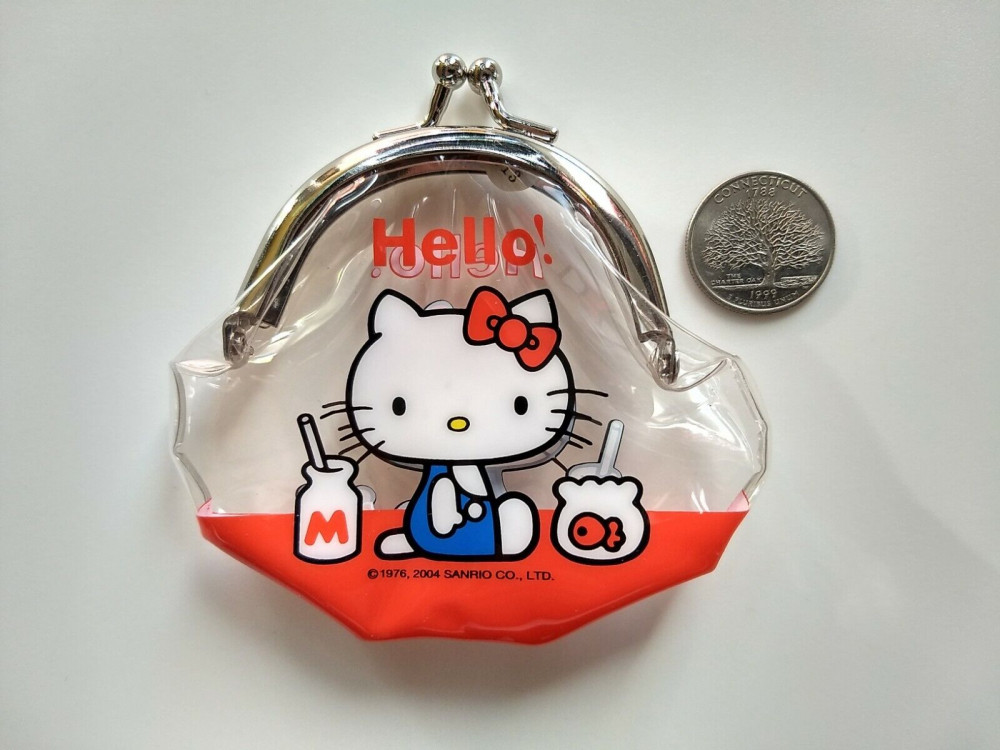
October 31, 2024
Celebrate Hello Kitty’s 50th Birthday
The birthday and history of a global icon
Hello Kitty’s 50th Birthday is on November 1. Over the decades, this worldwide symbol of kawaii has evolved from a small character on a purse to a cultural ambassador and a global pop culture phenomenon. Here’s how it happened.
In 1974, 24-year-old Yuko Shimizu joined a Japanese company called the Yamanashi Silk Company, which specialized in rubber sandals decorated with strawberry prints.
Rebranding as Sanrio, they hired a team of young creatives, hoping they would develop some new, profitable designs. It only took Shimizu a few days to create the cartoon that would change Sanrio’s fate. Hello Kitty was born on November 1 that same year.
The Birth Of A Little Girl (Yes, She Is NOT A Cat)

Hello Kitty debuted on a tiny clear vinyl coin purse, sold for less than a dollar. Today, only one original purse exists, and Sanrio keeps it in a secure vault at its headquarters in Tokyo. The character, a white cat with no mouth, a red bow and an expressionless face, was an immediate hit.
Her full name is Kitty White. She was born in the suburbs of London, where she lives with her parents and her twin sister, Mimmy. While many might assume Hello Kitty is Japanese, Sanrio’s founder, Shintaro Tsuji, wanted the character to have a universal appeal. As British culture was trendy in Japan during the 1970s, Sanrio gave her an English name and background.
And no, she is not a cat. She is, in fact, a little girl. Sanrio’s senior vice president of marketing and brand management, Jill Koch, set the record straight this summer, confusing many fans. She also revealed that Hello Kitty weighs three apples and is five apples tall. She’s 8 years old, a Scorpio (figures!) and has a pet cat named Charmmy Kitty.
Yuko Shimizu created her mouthless expression to allow fans to project their emotions onto her, making her relatable regardless of the viewer’s feelings. Whether you’re a child in Tokyo or London, her expressionless face speaks the same silent language. Anyone can find comfort and resignation in Kitty White.
Hello Kitty and the Kawaii Culture
Hello Kitty’s rise to global prominence aligned with the growth of Japan’s kawaii culture in the late 20th century. The Kawaii movement, emphasizing cuteness and innocence, took hold in Japan and influenced everything from fashion to art. Hello Kitty remains the poster child for the phenomenon. According to her background story, her hobby involves baking cookies and making new friends—you don’t get any cuter than that!
By the early 1980s, retailers sold Hello Kitty products internationally, and she secured a devoted following. What started as a line of children’s products quickly expanded, attracting adults as well. Hello Kitty gained such fame that a McDonald’s in Singapore became the site of a real-life kitty riot on New Year’s Day in 2000. By buying a hamburger at the store, you could, if lucky, receive a limited edition Hello Kitty in a wedding dress.
The thrill became too much between a truck driver and a doctor waiting in line, resulting in a fistfight that drew in more customers. Seven people suffered injuries, and paramedics took three to the hospital. Throughout the rest of the day, police had to manage the crowd at the 113 restaurants involved—Not very cute.
A Commercial Kitty

Over the years, Hello Kitty’s influence expanded beyond the Kawaii movement and hype. In 2008, Japan’s Ministry of Land, Infrastructure, Transport and Tourism named Hello Kitty a “tourism ambassador” to promote Japanese culture worldwide. UNICEF also named Hello Kitty the children’s ambassador in both the United States and Japan.
The ambassador roles reflect Hello Kitty’s international appeal. Though her design remains simple and unchanged, she stays relevant through various collaborations with big brands. Notable fashion collabs include Crocs, Casio and Balenciaga—a real style icon if you ask me.
Hello Kitty has been featured in animated series, video games and theme parks and even has an airplane and a Shinkansen line dedicated to her.
With over 50,000 products featuring her image in more than 130 countries, Hello Kitty represents one of the most successful licensing empires in the world. While she may be cute and innocent, Hello Kitty is also a significant money-making machine.
This design alone generated $84.5 billion, making it the second most valuable media franchise in the world, just behind Pokémon at $105 billion. Hello Kitty pioneered a new business model where characters are the product.

The Future of Hello Kitty
Celebrating Hello Kitty’s 50th birthday, she secures her place in the global cultural landscape. Sanrio continues to innovate, introducing new products and collaborations to keep Hello Kitty relevant to each new generation. In an era where trends quickly come and go, Hello Kitty stays.
This might also contribute to her success with adults, reminding them of a simpler time when a child’s favorite entertainment was a teddy bear, not electronics or passing trends seen on TikTok. Nostalgia is also a factor, as many adults today grew up with Hello Kitty, in one way or another.
However, even Hello Kitty must adapt to global digitalization. Last year, Sanrio teamed up with MetaGaia, an AI-enhanced open metaverse, to launch the “Hello Kitty Seven Wonders” metaverse. Fans can interact with their favorite characters and build communities within the digital destination.
Sanrio’s CEO promises that this will not be the end of Hello Kitty’s life in the alternative universe, teasing new metaverse collaborations in the future, probably making her a symbol for the virtual world as well. But can the virtual kawaii experience carry the same emotional weight? I guess we’ll have to wait and see.

Happy 50th birthday, Hello Kitty. Here’s to many more years of connecting the world with your signature innocent charm in both the virtual and real world.
Celebrate Hello Kitty’s 50th birthday with the “Hello Kitty Exhibition – When I Change, Kitty Changes Too” at the Tokyo National Museum from November 1, 2024 until February 24, 2025.







